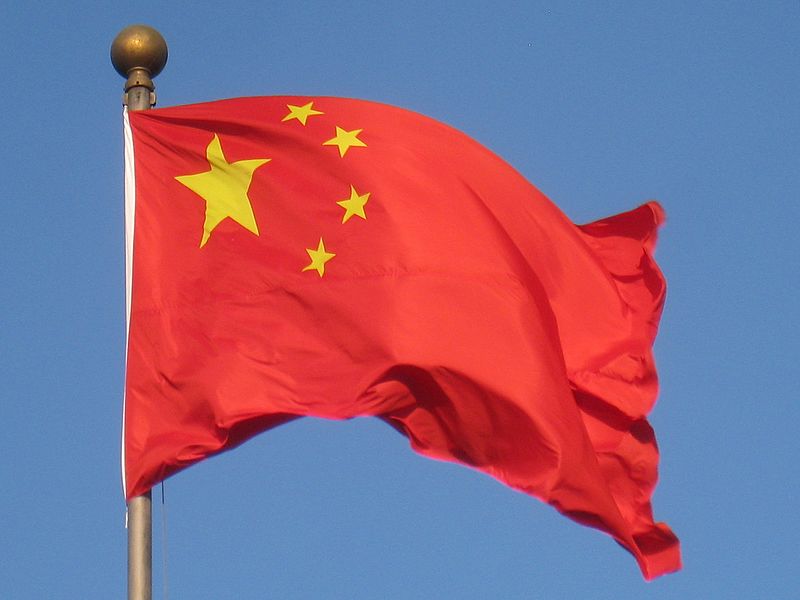Despite the plans announced earlier by the Chinese authorities to reorient the Chinese economy to domestic demand as a more sustainable source of growth, in 2017 its share in the country's GDP returned to around 2015 (58.8% and 59.7%, respectively) after a surge to 66.5% in 2016. “Rebalancing of the Chinese economy slowed down last year. In particular, external demand has once again become an important driver of its real growth, its contribution was 0.6 percentage points, and this is the maximum since the 2008–2009 crisis (contribution of consumption was 4 percentage points, investment - 2.2 percentage points), ” note authors of working report on implementation of reforms in the country.
Last year, real exports to the PRC grew by 9.2%, imports - by 6.9% (versus 0.4% and 2.5% in 2015–2016). Investment growth was weak, and at the same time investments in infrastructure remained the main source of investment in fixed assets (28% of the total against 23% in 2011). As a result, their share declined last year to 32.1% (in 2016, it was 43.1% - then net exports made a negative contribution to 9.6%). Environmental restrictions also had a significant impact - the share of coal in the energy balance decreased from 67% to 60%; the last large coal station closed in March 2017 in the Beijing area.
Another declared goal of the Chinese authorities was to reduce inequality - the government significantly increased its programs to combat poverty, but the discrepancy in income remains extremely high (the Gini coefficient rose to 0.467 last year, which is not far from the peak of 0.491 in 2008). Among the reasons for the high inequality are listed the lack of “coverage” of urban migrants with education and medical services. The difference in incomes in cities and rural areas ceased to decline as early as 2013, and since then has hardly changed. The volume of labor incomes to GDP last year slightly decreased after growing for several years, and the gap in per capita GDP between the richer regions of the southeast and the poorer northern and western territories of the country is growing.
In the future, external demand rebalancing will continue - according to the researchers' forecast, the contribution of net exports in the next five years will be negative, and the current account surplus will consistently decline. As for domestic demand, consumption and the services sector will be important drivers of growth, but the main obstacle will be high levels of debt - lending to GDP will continue to grow, the debt burden of the non-financial private sector will grow from 250% of GDP in 2017 to more than 280% GDP in the 2023rd. Progress in reducing inequalities remains unlikely - the use of new technologies will expand public access to financial services and supply chains, but threatens to reduce the employment of low-skilled workers.
source: imf.org
Last year, real exports to the PRC grew by 9.2%, imports - by 6.9% (versus 0.4% and 2.5% in 2015–2016). Investment growth was weak, and at the same time investments in infrastructure remained the main source of investment in fixed assets (28% of the total against 23% in 2011). As a result, their share declined last year to 32.1% (in 2016, it was 43.1% - then net exports made a negative contribution to 9.6%). Environmental restrictions also had a significant impact - the share of coal in the energy balance decreased from 67% to 60%; the last large coal station closed in March 2017 in the Beijing area.
Another declared goal of the Chinese authorities was to reduce inequality - the government significantly increased its programs to combat poverty, but the discrepancy in income remains extremely high (the Gini coefficient rose to 0.467 last year, which is not far from the peak of 0.491 in 2008). Among the reasons for the high inequality are listed the lack of “coverage” of urban migrants with education and medical services. The difference in incomes in cities and rural areas ceased to decline as early as 2013, and since then has hardly changed. The volume of labor incomes to GDP last year slightly decreased after growing for several years, and the gap in per capita GDP between the richer regions of the southeast and the poorer northern and western territories of the country is growing.
In the future, external demand rebalancing will continue - according to the researchers' forecast, the contribution of net exports in the next five years will be negative, and the current account surplus will consistently decline. As for domestic demand, consumption and the services sector will be important drivers of growth, but the main obstacle will be high levels of debt - lending to GDP will continue to grow, the debt burden of the non-financial private sector will grow from 250% of GDP in 2017 to more than 280% GDP in the 2023rd. Progress in reducing inequalities remains unlikely - the use of new technologies will expand public access to financial services and supply chains, but threatens to reduce the employment of low-skilled workers.
source: imf.org





